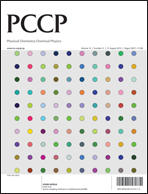Location of protons in N–H⋯N hydrogen-bonded systems: a theoretical study on intramolecular pyridine–dihydropyridine and pyridine–pyridinium pairs†
Abstract
Two-dimensional potential energy surfaces (PESs) were calculated for the degenerate intramolecular


 Please wait while we load your content...
Please wait while we load your content...